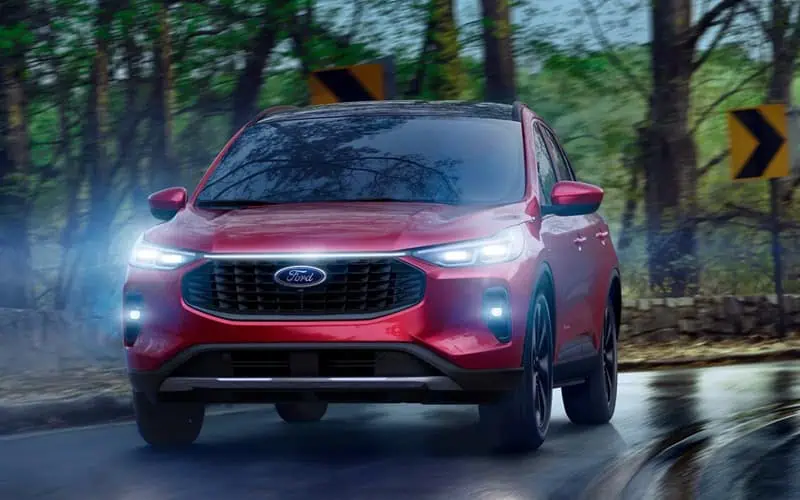The Ford Escape PHEV (Plug-in Hybrid Electric Vehicle) represents a significant evolution in the popular compact SUV segment, offering drivers the best of both worlds: electric vehicle efficiency for daily commuting and gasoline-powered range for longer journeys. Understanding the key differences between the PHEV and conventional gas-powered Escape models reveals how this technology transforms the driving experience, efficiency, and ownership considerations.

Powertrain Architecture: A Tale of Two Systems
The fundamental difference between the Escape PHEV and its gas counterpart lies in the powertrain architecture. The conventional Escape offers either a 1.5L EcoBoost three-cylinder or a 2.0L EcoBoost four-cylinder engine. In contrast, the plug-in-hybrid combines a 2.5L Atkinson-cycle four-cylinder engine with an electric motor and a 14.4 kWh lithium-ion battery pack.
This hybrid powertrain generates a combined 221 horsepower, positioning it between the standard 1.5L (181 hp) and the more powerful 2.0L (250 hp) gas engines. However, the electric motor provides instantaneous torque, giving the PHEV surprisingly responsive acceleration from a standstill despite not having the highest horsepower rating in the lineup.
Efficiency and Range: The Dual-Power Advantage
The Escape PHEV efficiency figures demonstrate its primary advantage over conventional models. When fully charged, the plug-in-hybrid offers up to 60 kilometres of all-electric range—sufficient for most daily commutes. Once the battery charge depletes, the system transitions to hybrid operation, delivering 5.8 L/100 km combined fuel economy.
By comparison, the 1.5L gas model achieves approximately 8.1 L/100 km combined, while the 2.0L AWD model rates at 9.1 L/100 km combined. For drivers who regularly recharge, these efficiency differences translate to potentially dramatic reductions in fuel consumption.
Driving Dynamics: A Different Feel
The driving experience differs substantially between PHEV and gas models. The additional battery weight (approximately 250 kg) affects handling and ride quality, with engineers having tuned the suspension specifically to accommodate this weight. Despite the added mass, many drivers report preferring the more planted feel of the plug-in hybrid, especially on highway drives.
The plug-in-hybrid also features a unique regenerative braking system that captures energy during deceleration to recharge the battery. This system creates a slightly different braking feel compared to conventional models, with a smoother transition between regenerative and friction braking than early hybrid vehicles.
Unique PHEV Features and Controls
The Escape PHEV includes several exclusive features not found in gas models:
Drive Modes
- “Auto EV” – Automatically manages power sources
- “EV Now” – Forces electric-only operation
- “EV Later” – Preserves battery charge for future use
- “EV Charge” – Uses the engine to charge the battery while driving
Information Displays
The digital instrument cluster and infotainment screens feature PHEV-specific displays showing electric range, power flow, and charging information not relevant to gas models.
Cargo and Interior Differences
The integration of the battery pack creates some practical differences between models. The PHEV battery is positioned beneath the rear seat and cargo floor, reducing cargo capacity slightly from 974 litres to 869 litres behind the rear seats. Additionally, the PHEV is not available with all-wheel drive, whereas gas models offer this option.
Maintenance Considerations
Maintenance schedules differ significantly between PHEV and gas models. The plug-in-hybrid requires fewer oil changes due to reduced engine operation and experiences less brake wear thanks to regenerative braking. However, it introduces new maintenance considerations like battery health monitoring and eventual battery replacement after the warranty period.
The PHEV also eliminates some traditional failure points, such as starters and alternators, potentially reducing long-term maintenance costs despite the more complex drivetrain.
5 Facts About the Escape PHEV System
- The Escape PHEV electric motor generates 88 kW of power but can temporarily boost output to 97 kW under maximum demand, providing an additional power reserve not available in regular hybrid systems.
- Unlike many plug-in hybrids that lose cargo space to battery packaging, Ford engineers managed to position the Escape PHEV battery in a way that preserves the rear seat’s sliding functionality, maintaining one of the model’s most popular features.
- The electric motors are manufactured with no rare earth metals, reducing environmental impact during production and addressing potential supply chain concerns.
- The Escape PHEV features a specially designed electronic sound generator that produces a distinctive sound at low speeds to alert pedestrians to the vehicle’s presence when operating in silent electric mode.
- The liquid-cooled battery system includes a “power positive” temperature management feature that can preheat or cool the battery while charging to ensure optimal performance regardless of external temperatures.
Questions and Answers About the Ford Escape PHEV
How long does it take to charge the Escape PHEV?
- Charging times vary by method: approximately 10-11 hours on a standard household 120V outlet (Level 1) or 3.5 hours using a 240V Level 2 charger.
Does the Escape PHEV require premium fuel?
- No, it runs on regular 87-octane gasoline, unlike some hybrid performance vehicles that require premium fuel.
What happens if I never plug in the Escape PHEV?
- It will function like a conventional hybrid, still delivering better fuel economy than the gas-only models, but you won’t benefit from the plug-in electric range capability.
Can the Escape PHEV charge its own battery while driving?
- Yes, in EV Charge mode, the engine will actively recharge the battery while driving, though this is less efficient than plugging in.
Is the Escape PHEV available with all-wheel drive?
- No, the plug-in-hybrid model is currently offered only with front-wheel drive, while gas models are available with AWD.
How does cold weather affect the electric range?
- Cold temperatures can reduce electric range by 20-40% depending on how cold it gets, with most significant impacts below -10°C.
What is the warranty on the Escape PHEV battery?
- The high-voltage battery is covered by an 8-year/160,000-kilometre warranty.
Can I tow with the Escape PHEV?
- Yes, it has a towing capacity of 680 kg, though this is lower than the 907 kg capacity of the 1.5L EcoBoost model and the 1,587 kg capacity of the 2.0L EcoBoost.
Does the regenerative braking system replace the conventional brakes entirely?
- No, it still has conventional friction brakes that work in conjunction with the regenerative system, engaging automatically when stronger stopping power is needed.
Is there a significant difference in maintenance costs between PHEV and gas models?
- While routine service visits may cost slightly more for the plug-in-hybrid due to specialized training and equipment, owners typically experience lower overall maintenance costs due to reduced wear on braking components and less frequent oil changes.
*Disclaimer: Content contained in this post is for informational purposes only and may include features and options from US or international models. Please contact the dealership for more information or to confirm vehicle, feature availability.*



